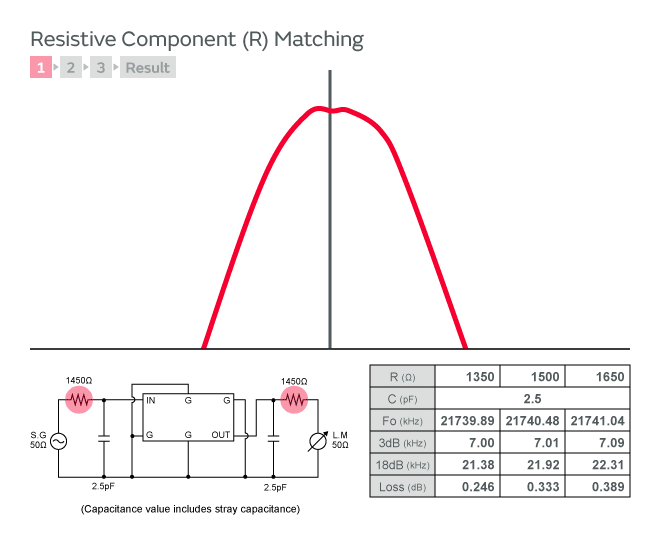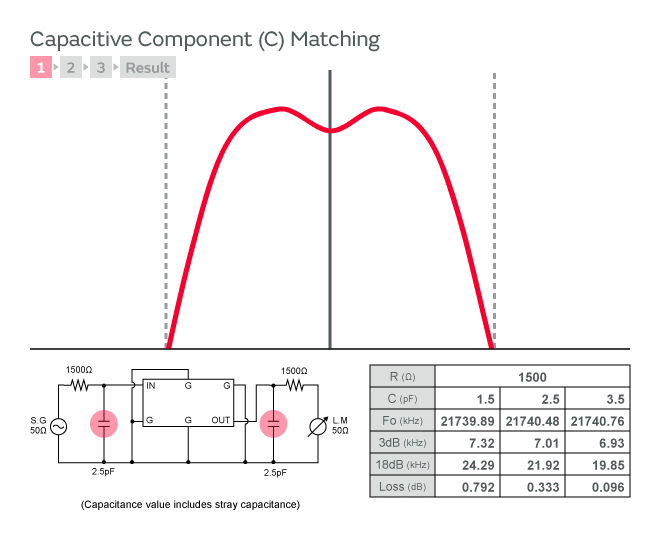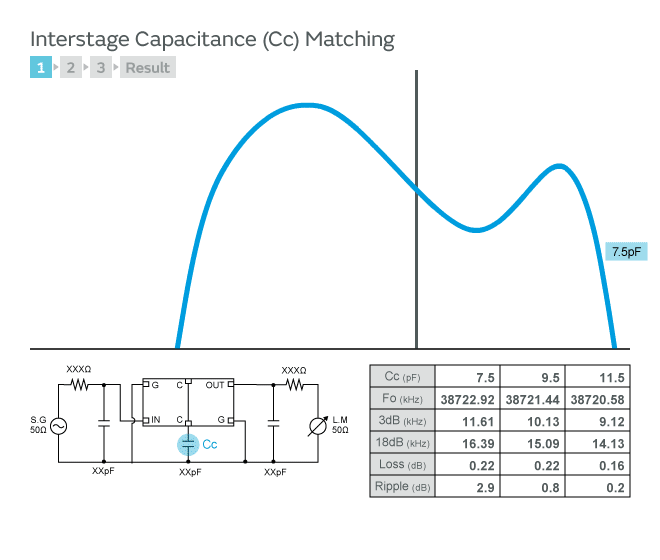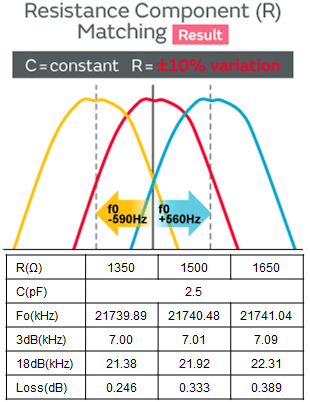Resistance Component (R) Matching
What will happen if a resistive component (R) in an input/output changes from the state where the resistance is matched?
When the resistance becomes lower than the matched value, the center frequency shifts to the negative spectrum. When the inverse occurs and the resistance becomes higher, the center frequency shifts to the positive spectrum.
For this reason, it is necessary to select a crystal filter with the correct impedance resistance with little variation (±10% is not acceptable).

Capacitive Component (C) Matching
What will happen if a capacitive component (C) in an input/output changes from the state where the capacitance is matched?
When the capacitance becomes lower, the waveform expands. Both the pass bandwidth and attenuation bandwidth expand, and the distortion at the apex disappears. (Low ripple)
When the capacitance becomes higher, the waveform narrows. Both the pass bandwidth and attenuation bandwidth become narrower, and the apex distorts. (High ripple)
For this reason, it is necessary to select a crystal filter with the correct impedance capacitance with little variation (±1.0 pF is not acceptable).

Interstage Capacitance (Cc) Matching
Next, the role of interstage capacitance (Cc) in a 4 pole filter is explained.
When the waveform and center frequency is shift in a 4 pole filter, the value of the interstage capacitance is adjusted to balance the waveform.
In this example, the interstage capacitance is increased by 2.0 pF at each stage to adjust the value from Cc=7.5 pF → 9.5 pF → 11.5 pF, matching the desired waveform with an interstage capacitance of 11.5 pF.
As described above, it is necessary to select a product with the correct interstage capacitance (Cc) with little variation.











